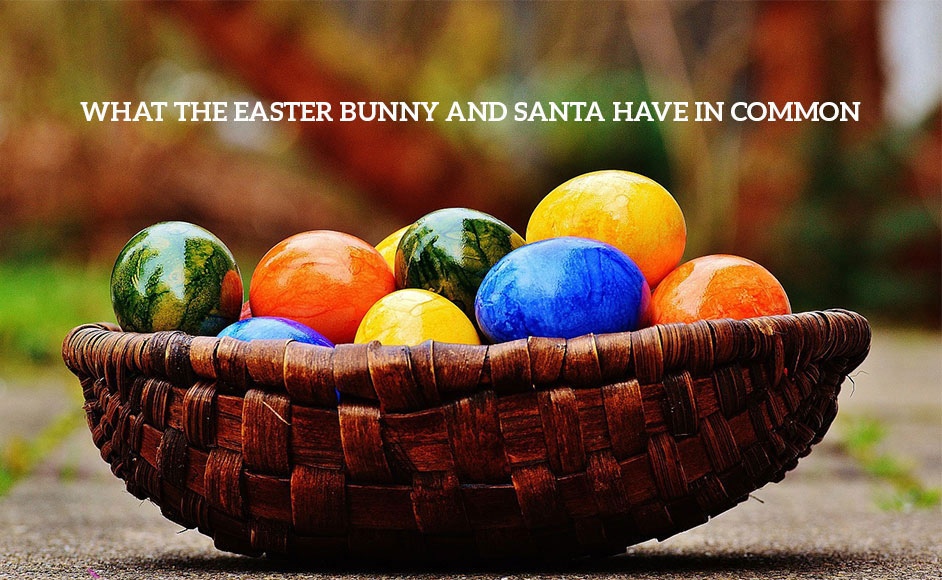What the Easter Bunny and Santa have in Common
What do the Easter Bunny and Santa Claus have in common? More than you might think.

Like Santa and his presents, the Easter Bunny and his eggs have their roots in European, religious folklore, invented to make kids behave themselves. It seems the parenting tactic of bribing your kids to behave is as old as The Old Country itself.
The bunny actually began as a European hare. Hares are larger than rabbits, with longer ears and longer legs. Now this is where it gets weird. Well, even weirder than a rabbit that delivers eggs. Medieval Europeans knew the hare, like its rabbit counterpart, was a prolific breeder, and it had long been a symbol of fertility. But what they didn’t know was a whole lot about The Birds and the Bees. They also believed hares were hermaphrodites, and all their offspring were born via virgin births. If you see the religious symbolism in that, you’re not the only one. German Protestants saw it too. During The Middle Ages, the Hare found it’s way into their church tradition, representing the Virgin Mary.
Now what about those eggs? Like the rabbit, eggs were a long-time symbol of fertility for obvious reasons. They were also one of the things European Protestants gave up for lent. They hard-cooked the eggs to keep them from spoiling until Lent was over. They often boiled the eggs with flowers which dyed the eggs pastel shades of spring. On Easter Sunday, Lent was over, so they feasted on all those eggs they saved up. Since Easter is celebrated in the spring, and it observes the resurrection of Christ, the pretty eggs ended up becoming associated within the church with spring and new life.
Now, no one knows for sure when or how, but eventually the two collided, and the Easter Hare started delivering eggs. Probably it was just a tricky way for the Germans to get their kids to eat all those hard boiled eggs. Children made special nests inside their Easter bonnets and left them out overnight. If the children were good children, the hare would lay eggs in their nest. Hmm, sounds a lot like Santa and the stockings hung by the chimney with care, right? Clearly, medieval kids had different ideas about what constituted a treat, because I’m pretty sure eggs wouldn’t motivate my modern-day children to behave.
The Easter Hare brought his eggs to the U.S. with German immigrants in the 1700s. There were no hares in the Thirteen Colonies, so the hare became a bunny. Eventually, the nest inside the bonnet morphed into a basket, and candy and toys found their way in among the eggs. Egg decorating became fancier when the Russian’s Faberge eggs caught on. After that, marketing and pop culture took over, creating today’s ubiquitous American Easter tradition that is both religious and secular. I’m just glad we left out the part about the hermaphrodite, because who wants to explain that to a toddler?



